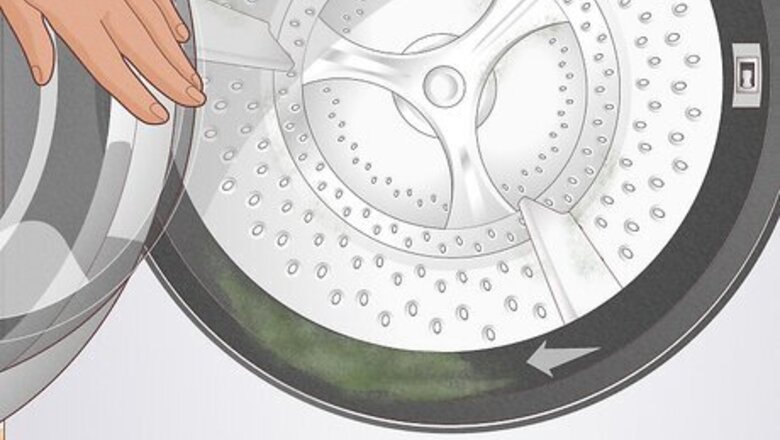
views
Common Causes of a Smelly Washing Machine
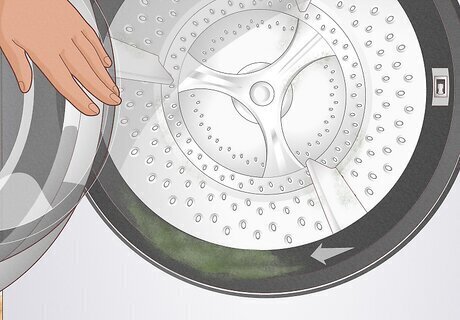
Mold, mildew, and bacteria When water gets trapped inside your machine or wet laundry sits for a while, mold, mildew, and bacteria can build up and create odors. This is more common on front-loading washers, especially around the seals and gaskets.
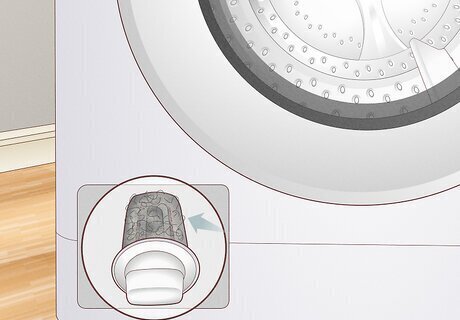
Dirty filter The filter on your washing machine removes debris from the water. A dirty filter can redistribute debris and odors to clothes, leading to a stinky washer.
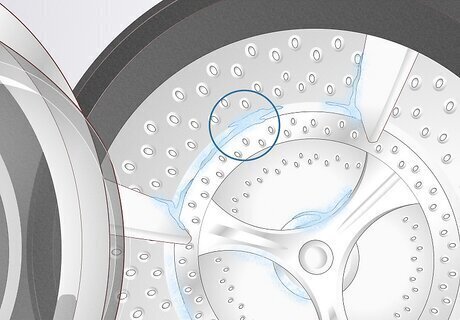
Detergent residue Laundry detergent can accumulate in and around the machine's drum, drawer, and filter. When left for too long, it can become a breeding ground for bacteria—leaving you with a funky smell.
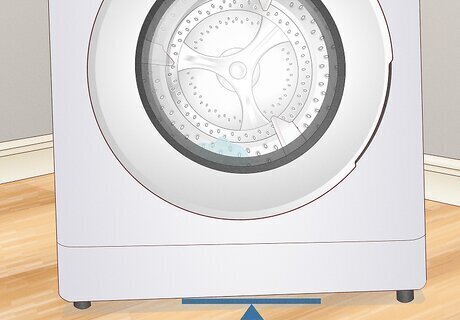
Unleveled washing machine When a machine is off-balanced or unleveled, it can prevent the water from draining properly. The standing water can create funky odors and may even attract pests.
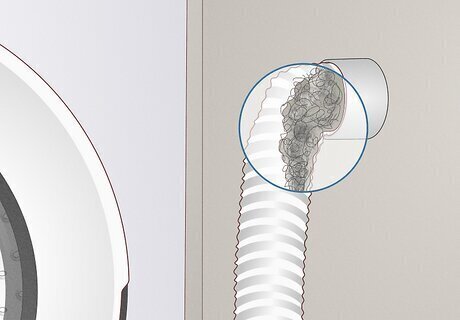
Drainage issues If your machine smells like rotten eggs or garbage, it's a sign there's a clog in the drainage hose, filters, or tubes. Not only does it create a stomach-churning smell, but it also reduces your machine's efficiency.
How to Clean Your Washing Machine
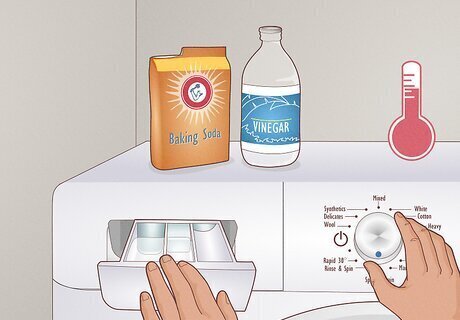
Run a hot wash cycle with bleach or baking soda and vinegar. Combine ⁄4 c (2.0 fl oz) of water and ⁄4 c (2.0 fl oz) of baking soda to get rid of mold or mildew. Pour the solution into the soap dispenser on your machine. In an empty washer, pour 2 c (16 fl oz) of white vinegar. Lock the door and run a hot wash cycle. Alternatively, Professional Cleaner James Sears recommends filling the detergent drawer with bleach before running the washer. Select the “clean” or “maintenance” settings. Then, run a second cycle with water to rinse any lingering bleach. Use a commercial washing machine cleaner as a substitution for a DIY solution.
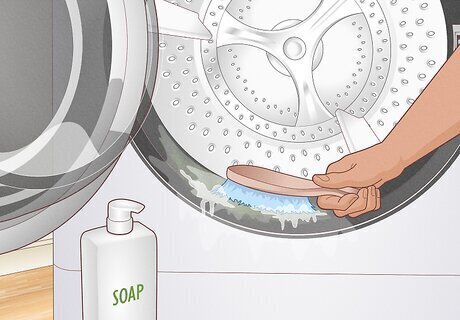
Use hot water and soap to wipe the seals and gaskets. House Cleaning Professional Chris Willatt recommends cleaning a smelly machine by opening the washer door and wiping the rubber lip with a soft brush or damp cloth. Pull the rubber back to check for any lingering objects or debris, and wipe with a dry cloth. Use an all-purpose cleaner or spray a 1:1 ratio of white vinegar and water if you see mold or mildew.
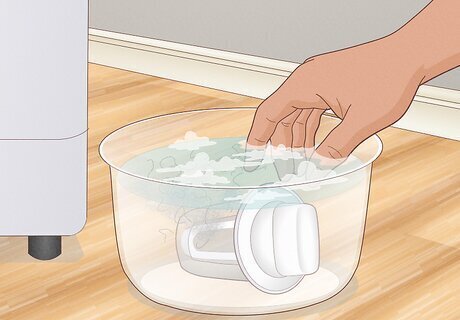
Clean your washing machine filter to remove debris. Find your filter behind a trap door on the front of the machine, in the center agitator, top lip of the drum, or at the end of the drainage hose. Use a paper towel to remove any visible debris. Then, soak the filter in hot, soapy water for 10 minutes. Allow it to air dry before replacing it. Clean the filter every 3 months.
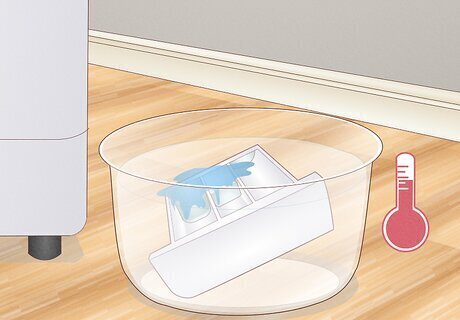
Soak the detergent dispenser in hot water. Remove the detergent drawer by gently lifting the tray out of its slot. Rinse the drawer under warm water, wipe away any detergent or fabric softener buildup, and let it dry. Between loads, dry the drawer with a paper towel or leave it open to air out to help prevent mold or mildew buildup.
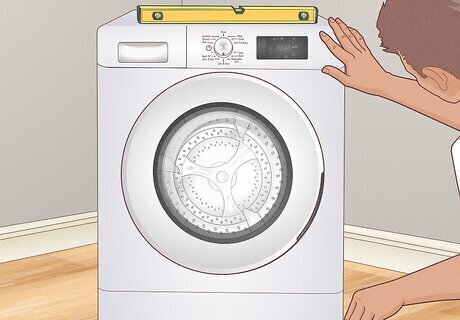
Level the washer with shims. Rest a level atop the machine. If the bubble is uncentered, slip shims or something similar under the machine's feet.
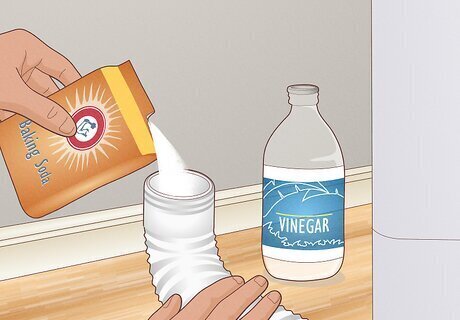
Pour white vinegar and baking soda into the drainpipe for sewage odors. Pull the machine away from the wall. Detach the drain hose from the permanent standpipe and pour equal parts white vinegar and baking soda into the drainpipe. If there’s a clog, use a wire hanger or a plumbing snake to twist and pull any debris caught inside the drain hose. There may be an issue with the plumbing if the smell doesn't disappear. Call a plumbing specialist for further assistance. On average, a washing machine repair costs $150. However, prices may vary depending on the severity of the issue and the type of machine you have.
Odor Prevention
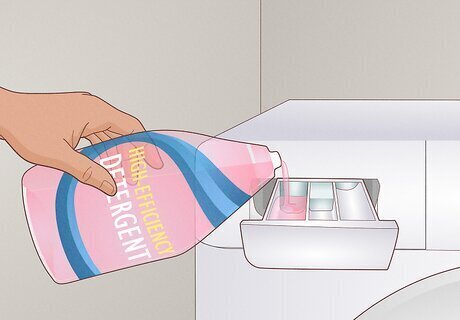
Use high-efficiency (HE) detergent to combat residue. Excessive suds can prevent your washer from tumbling properly and cleaning thoroughly. Opt for high-efficiency detergents which are low-sudsing and keep soiled detergents from being re-deposited onto cleaned laundry.
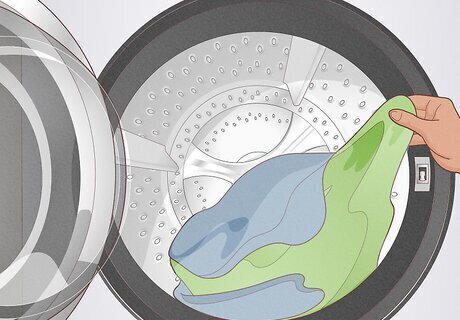
Remove clean laundry immediately after the wash cycle is complete. An easy way to prevent mildew and mold is by immediately transferring your clothes from the wash to the dryer. This prevents moisture from lingering in the machine too long.

Leave the washer door wide open after each cycle. Leave your front or top-loading washer door open to allow moisture to escape. This will help prevent mold, mildew, and bacteria growth, which contribute to a smelly washer. If you have young children around, lock the door to your laundry room to prevent them from playing around the machine.
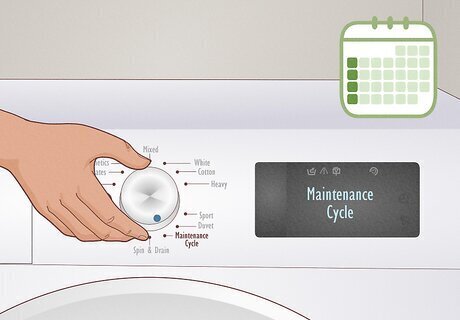
Run a "maintenance cycle" weekly or monthly. Some washers, like high-efficiency machines, have a "maintenance cycle." This setting runs a full wash cycle without any laundry to keep the inside clean and free from buildup. If there's no "maintenance cycle" button, select the hot water setting, then select the "extra rinse" option. Add liquid bleach to the dispenser and run the cycle. “If [you] don’t use [your washing machine] all that often, you can get away with every six months or every two months.” Professional Cleaner Ashley Matuska also recommends washing the machine with vinegar every 3 months.


















Comments
0 comment